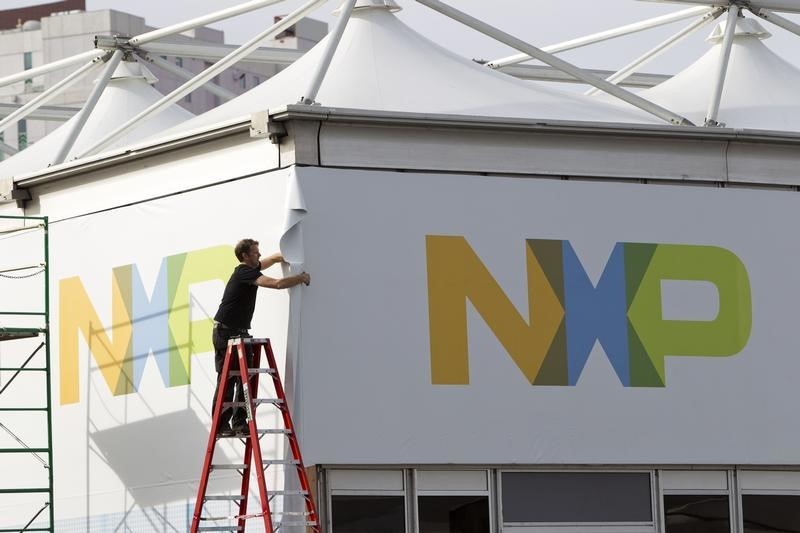(Updated - April 30, 2024 3:57 AM EDT)
Shares of NXP Semiconductors (NASDAQ:NXPI) gained 6% in premarket trading Tuesday after the company posted better-than-expected Q1 earnings per share (EPS) and met expectations for revenue.
In particular, the semiconductor company reported first-quarter EPS of $3.24, surpassing the consensus estimates of $3.19.
Revenue was reported at $3.13 billion for the quarter, in line with analyst estimates.
NXP reported non-GAAP gross and operating margins of 58.2% and 34.5%, respectively.
For the second quarter of 2024, NXP forecasts EPS to be between $2.36 and $2.77, against a consensus estimate of $2.56.
The company also anticipates Q2 revenues to range from $3.03 billion to $3.23 billion, compared to the $3.11 billion forecasted by analysts.
“Our first-quarter results, guidance for the second quarter, and our early views into the second half of the year underpin a cautious optimism that NXP is successfully navigating through this industry-wide cyclical downturn,” Kurt Sievers, NXP President and Chief Executive Officer of NXP Semiconductors.
“We continue to manage what is in our control enabling NXP to drive solid profitability and earnings in a challenging demand environment,” he added.
"Amid various levels of peer downside and worries over weakening auto NXPI’s results and outlook (revenues pretty much inline with a bit of margin upside) while a touch sub-seasonal were in fact quite calm relative to expectations," analysts commented in a post-earnings note.
"And while investors (including us) have been a bit skeptical as to the company’s ability to navigate the current cycle as various key end markets weaken, management’s claims of superior execution vs their past are admittedly gaining more credibility with each passing quarter," they added.
Analysts said several questions may be in focus in Tuesday's morning conference call, including whether the auto cycle for NXPI is as gentle as it currently appears.
Another area of interest could be the dynamics within the company's core industrial business, especially in light of the resumed year-over-year growth in the IoT segment, and whether this growth has been predominantly consumer-driven. In addition, with both gross margins and operational expenditures performing better than anticipated, analysts might seek insights into what can be expected in these areas moving forward.
"But at first glance there was not a lot to nitpick here," analysts added.
